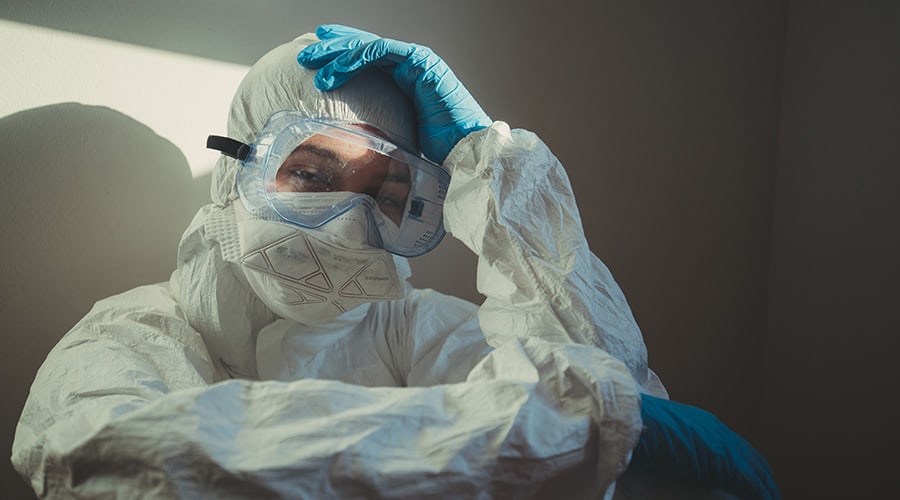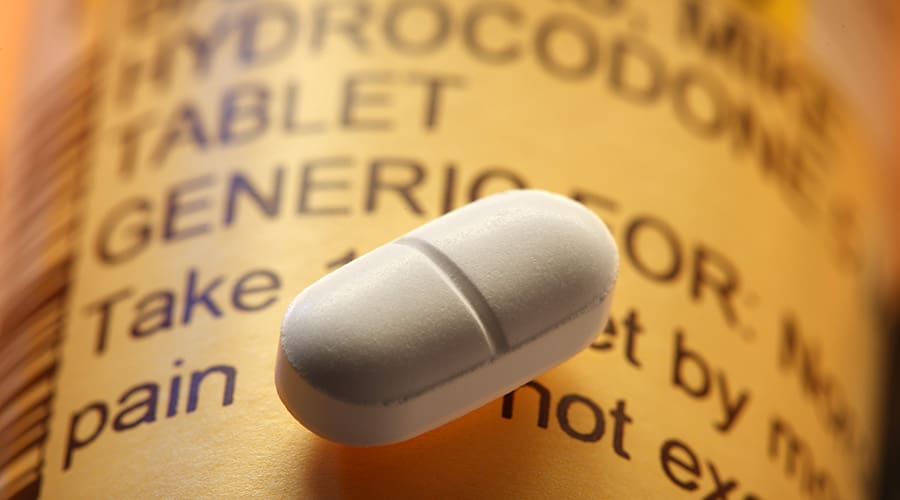
The presence of COVID-19 is presenting more mental health challenges to an already vulnerable population.
Lynette Charity, MD, didn’t want to just injure herself. She wanted to be dead. And she wanted to be dead quickly, albeit with as little pain endured as possible. So, she ran —not walked — ran to the bridge, climbed to the highest point of the railing that she could get to, and began mentally preparing herself for what was becoming a calculated free fall. The voices in her head were now in a fierce competition with the reasoning that only a suicidal person can conjure.
“The strangest things were coming into my head at that point,” said Charity, 68, now about 20 years removed from what she describes as a near-suicide attempt. “I thought about the [rule of physics] that says that objects fall at a rate of 32 feet per second, per second. I began to think about how, if I hit my head on a rock that it would be a good thing. And then I just closed my eyes.”
******
An estimated 300-400 physicians kill themselves per year, a rate of 28-40 per 100,000, or more than double that of the general population, according to a 2018 review.1 The World Health Organization reports that one person dies every 40 seconds by suicide and that suicide is the 10th leading cause of death in the United States, occurring at a rate of 13 per 100,000 persons.2 A national study of nurse behaviors published in February 2020 found that female nurse suicide rates from 2005-16 were significantly higher (10 per 100,000) than the general female population (seven per 100,000).2 Similarly, male nurses (33 per 100,000) were higher than the general male population (27 per 100,000) for the same period.2 While finding statistics on the rate of suicide by clinicians of every discipline, some experts regard suicide as an “occupational hazard” for healthcare providers in general.3 Across the general population, the suicide rate has climbed 30% since 2000, an increase that officials with the Centers for Disease Control & Prevention (CDC) have characterized as unprecedented.4 Suicide is the second leading cause of death among those ages 10-34 while the escalation rates has reportedly has emerged in all age groups and both genders (with the only exception being those aged 75 years and older).5 Among women in general, the suicide rate has jumped 50 percent since 2000.6 Physicians reportedly have the highest rate of suicide of any profession, including the military and law enforcement.3
According to a 2018 review, almost 55% of physicians report symptoms of burnout while more than 37 percent of nurses report burnout.3 The epidemic of burnout among medical professionals is likely the cause of the increases in suicide because it leads to chronic mental health challenges, including compassion fatigue, depression, anxiety, and/or other mood disorders.3 Personal stressors, such as family conflict, divorce, and parenting issues, as well as substance abuse, also contribute to the potential for burnout.3
For Charity, who today is retired after spending a 40-year career working as an anesthesiologist, she can remember the physician-related stress manifesting since before Day 1 as a doctor, but also had stressors stemming from her childhood that eventually parlayed into a manifestation of suicidal behaviors.
******
Charity remembers the stress of medical school actually causing her a depression so strong that she stopped eating and became a ‘workaholic’ in a deliberate attempt to “waste away to nothing.” “And that’s when I first had thoughts of committing suicide,” she said. “I didn’t eat. That’s how I was going to kill myself.” If it weren’t for a mentor who helped her get into talk therapy, Charity is unsure of how her condition would have fared. Although she ultimately rebounded well enough to complete her schooling and begin her career, the intervention could not erase the rooted torment that Charity experienced at a young age and harbored most of her life. She was all of 6 years old she when, while walking through the neighborhood with two of her older brothers, she witnessed the death of her 2-year-old sister, who was struck by a car and killed as the siblings were en route to get ice cream.
“Back then, grief and trauma in children was not a concept,” she said. “But when I look back on my life I can recognize some experiences that led me to ‘act out’ because of that experience. I was a bully. I fought people. But all of that was in response to not having someone to talk with about my experiences.”
As she stood up on that bridge, contemplating death, she said the desire to talk through her feelings subconsciously found their way into her racing thoughts in the form of her mother’s voice. As a tried-and-true Virginian, the fear of mom’s disapproval could not be ignored.
“As I was about to jump, my mother came into my head and I heard, ‘Call your mama,’” Charity said. “And that snapped me out of the state that I was in and what was controlling my mind. I thought to myself, ‘If I don’t call my mother before I kill myself, she’s going to kill me.’ And that was a bigger fear for me.”
As it was, mom had already been familiar with the realities of mental health disorders. “My father suffered from what is now called post-traumatic stress disorder – but back in his time they called it ‘shell shock,’” Charity said. “He fought in World War II and [was injured] when a mine went off. He spent time in a psych ward and managed the condition as best he could when he got home – but did so with alcohol.”
******
A cascade of events and experiences can lead any healthcare provider to suicide, just as is the case with anyone, said Charity. However, the stigma of being a healthcare provider with a mental health condition is unlike any other individual’s or cohort’s experiences, she says.
“Mental health has always been the bane of our existence,” she said. “We have never been allowed to just be human beings who get stressed out like everybody else. There’s the stigma of, ‘This is the job you chose, so why are you killing yourselves over it?’ We need people to understand that we can get sick just like everyone else. We can get cancer, heart disease, lung disease – and we can get ‘brain disease.’”
As it relates to the novel coronavirus (COVID-19), the susceptibility to experience a mental health malady has thrown the already known, concerning, statistical prevalence of suicide among providers into immeasurable proportions. Recent reports of suicides by healthcare workers hint at a COVID-19 mental health crisis to come, according to Charity.
“This has been volume of death,” she said. “This has been, you walk into the building and the ambulance has a dead body in it to the hospital in time for the patient to be alive. You have storage units in hospitals where they are freezing bodies because the morgues are overwhelmed. The ICUs are full – full with COVID patients. Everybody is on a ventilator in some hospitals, and you can’t get them off the ventilators. It’s day in and day out of watching these patients die.”
Yes, healthcare providers see death occur. There’s no escaping it. And, yes, the world has previously seen pandemics—so COVID is not necessarily presenting an “unprecedented” situation. But for people of a certain age today, and for those young enough to still be working today, this pandemic has ushered in a reality for which there is no clinical rulebook.
“We don’t know what to do,” Charity said. “You go to medical school, you learn the anatomy and the antibiotics – you learn everything there is to learn – and then this virus comes along and blows everything out of the water. Nothing that you’ve ever learned can save these patients. You’re helpless. You’re trained to save lives and sometimes people are dying before they even get to you. Day after day. This is the massiveness of death, and it has everyone on edge.”
Mentally, the anxieties seem endless. Beyond the confusion that coronavirus has wrought, providers must confront the “inner critics” that we all have, Charity said. They must assume the risk of potentially bringing the virus home to their families. They face the risk of actually contracting the virus themselves, of course, and if they do test positive they are then sent home or into isolation where all they are seeming left with is their thoughts … and the inability to be present with their mounting patients.
“You can’t even try to save people, and you don’t have your colleagues to talk through your sadness — and that’s when the voices can come out, big time,” Charity said. “And these voices are strong. When you’re in the grips of suicidal ideations, it is amazing how convincing the voices can be.”
******
For Charity, the voices resonated in one message on that day she found herself ready to plummet through air and space 32 feet at a time: You are not a good doctor, you are not a good mother, and you should just die. “And the way I felt was, ‘you’re absolutely right, voice. Let me go find a place to kill myself.’ I had never had an image or voice in my head so convincing as the voice telling me that. And I needed the voices out of my head.”
Typically, when she would hear those voices as a working professional, she was able to quiet them by immersing herself in her work. But for today’s providers, COVID has lead to a level of distancing that has pulled providers from every conceivable healthy distraction.
When compounded with the perception that a healthcare provider should not have a mental health issue, the situation becomes that more tenuous. Realistically, scores of those who “survive” the mental aspects of this pandemic are much more likely to leave the profession before something like this pandemic ever happens again, Charity said.
“It is already anticipated that by 2030 we will be down at least 120,000 physicians,” she said. “And I think you’re going to see this trend among all healthcare providers, especially the frontline workers. If we don’t get a break soon there’s going to be a mass exodus of people out of medicine and healthcare. Or there’s going to be more suicides.”
******
Despite the stigma, and despite the challenges that working as a healthcare provider who has been diagnosed with a mental health condition may be, Charity urges those who are even feeling slightly overtaken by stress to seek immediate professional assistance.
“It’s better to be treated than untreated,” she said. “You have to have a lifeline – someone you can talk to about whatever is going on in your life who will not judge you about whatever you’re struggling with.” For Charity, that person is a good friend, a physician. Someone she’s known for many years. She also sees a psychiatrist.
“It’s the untreated who are more likely to harm themselves, or harm others, or quit the profession,” she said. “The voices, those inner critics, don’t always cause us to jump off a bridge. But these voices are very convincing. And if you don’t have anyone to counter them, bad things can happen.”
References
- Farmer B. When doctors struggle with suicide, their profession often fails them. NPR. 2018. Accessed online: www.npr.org/sections/health-shots/2018/07/31/634217947/to-prevent-doctor-suicides-medical-industry-rethinks-how-doctors-work
- Carr J. National study confirms nurses at higher risk of suicide than general population. UC San Diego Health. 2020. Accessed online: https://health.ucsd.edu/news/releases/Pages/2020-02-03-national-study-confirms-nurses-at-higher-risk-of-suicide.aspx
- Chard P. Addressing the alarming trends in suicides among healthcare professionals. Corporate Wellness Magazine. 2018. Accessed online: www.corporatewellnessmagazine.com/article/addressing-the-alarming-trends-in-suicides-among-healthcare-professionals
- Brueck H. The US suicide rate has increased 30% since 2000, and tripled for young girls. Here’s what we can do about it. Business Insider. 2018. Accessed online: www.businessinsider.com/us-suicide-rate-increased-since-2000-2018-6
- Suicide. NIH. 2019. Accessed online: www.nimh.nih.gov/health/statistics/suicide.shtml
- Tawagi K. Female suicide rate jumps 50 percent since 2000. ABC News. 2018. Accessed online: https://abcnews.go.com/Health/female-suicide-rate-jumps-50-percent-2000/story?id=55906336





